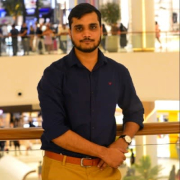

IBM Turbonomic and AWS Trusted Advisor compete in cloud resource optimization. IBM Turbonomic holds the upper hand in automation capabilities, while AWS Trusted Advisor is favored for its comprehensive insights and guidance.
Features: IBM Turbonomic automates resource management, integrates with various environments to ensure application performance, and focuses on real-time optimization. AWS Trusted Advisor provides actionable recommendations for cost optimization, security, and performance, with a wide array of checks tailored to AWS infrastructure and centers on strategic advisories.
Ease of Deployment and Customer Service: IBM Turbonomic offers a detailed deployment model integrating with multiple platforms and is often noted for robust customer support. AWS Trusted Advisor provides seamless integration within the AWS ecosystem, benefiting those embedded in AWS services. IBM's deployment includes a learning curve, while Trusted Advisor's compatibility with the AWS environment ensures a quicker start.
Pricing and ROI: IBM Turbonomic requires a higher setup investment, promising strong long-term ROI due to proactive optimization features. AWS Trusted Advisor is cost-effective initially for AWS environments, offering quick gains in cost and performance optimizations. Despite higher upfront costs, Turbonomic applies broadly across different cloud providers, whereas Trusted Advisor delivers strategic cloud cost management with swift results within AWS.
| Product | Market Share (%) |
|---|---|
| IBM Turbonomic | 4.9% |
| AWS Trusted Advisor | 1.0% |
| Other | 94.1% |


| Company Size | Count |
|---|---|
| Small Business | 5 |
| Large Enterprise | 3 |
| Company Size | Count |
|---|---|
| Small Business | 41 |
| Midsize Enterprise | 57 |
| Large Enterprise | 147 |
AWS Trusted Advisor is your customized cloud expert! It helps you to observe best practices for the use of AWS by inspecting your AWS environment with an eye toward saving money, improving system performance and reliability, and closing security gaps.
IBM Turbonomic offers automation, planning, and right-sizing recommendations to streamline resource management, improve efficiencies, and optimize costs across virtualized environments and cloud platforms.
IBM Turbonomic is valued for its capability to optimize resource allocation and monitor virtual environments efficiently. It facilitates automated decision-making in VM sizing, load balancing, and cost optimization for both on-premises and cloud deployments. Users can leverage insights for workload placement, ensure peak performance assurance, and effectively right-size across VMware and Azure. The ongoing transition to HTML5 aims to improve visual and navigational ease, while expanded reporting features are anticipated. Opportunities for improved training, documentation, and integrations enhance platform usability and functionality.
What Are the Key Features?In finance, IBM Turbonomic aids in maintaining platform efficiency during market fluctuations. Healthcare organizations leverage its capability for resource optimization during high-demand periods to enhance patient care support. Retailers use it for planning in peak seasons, ensuring resources align with fluctuating demand to maintain performance continuity.
We monitor all Cloud Management reviews to prevent fraudulent reviews and keep review quality high. We do not post reviews by company employees or direct competitors. We validate each review for authenticity via cross-reference with LinkedIn, and personal follow-up with the reviewer when necessary.